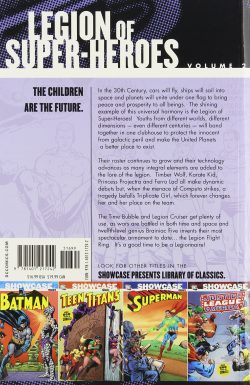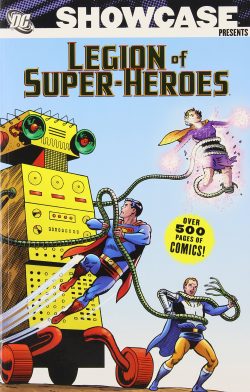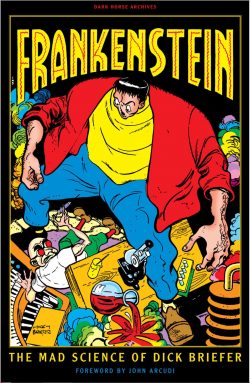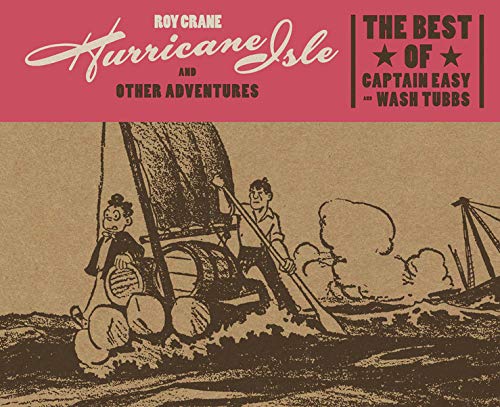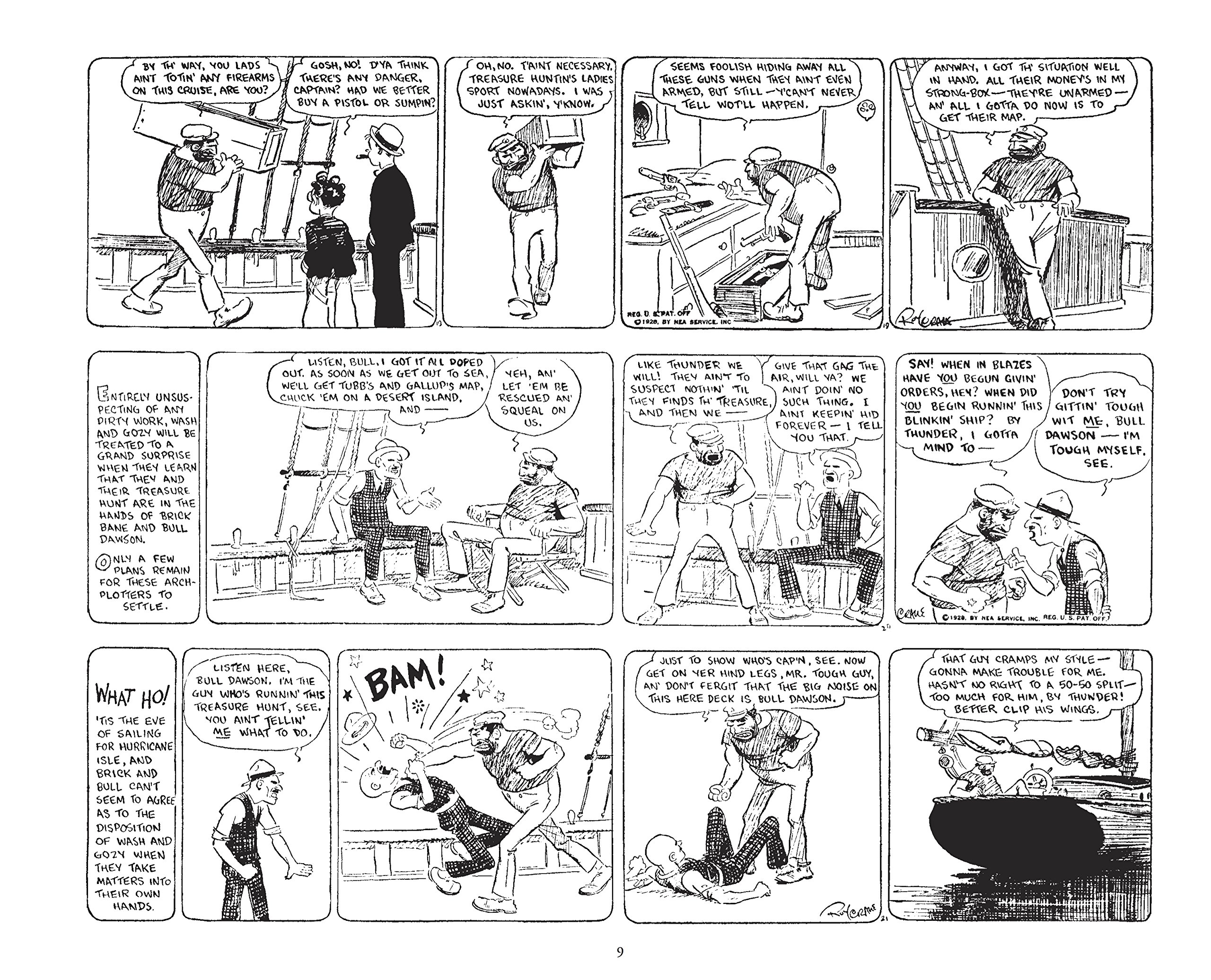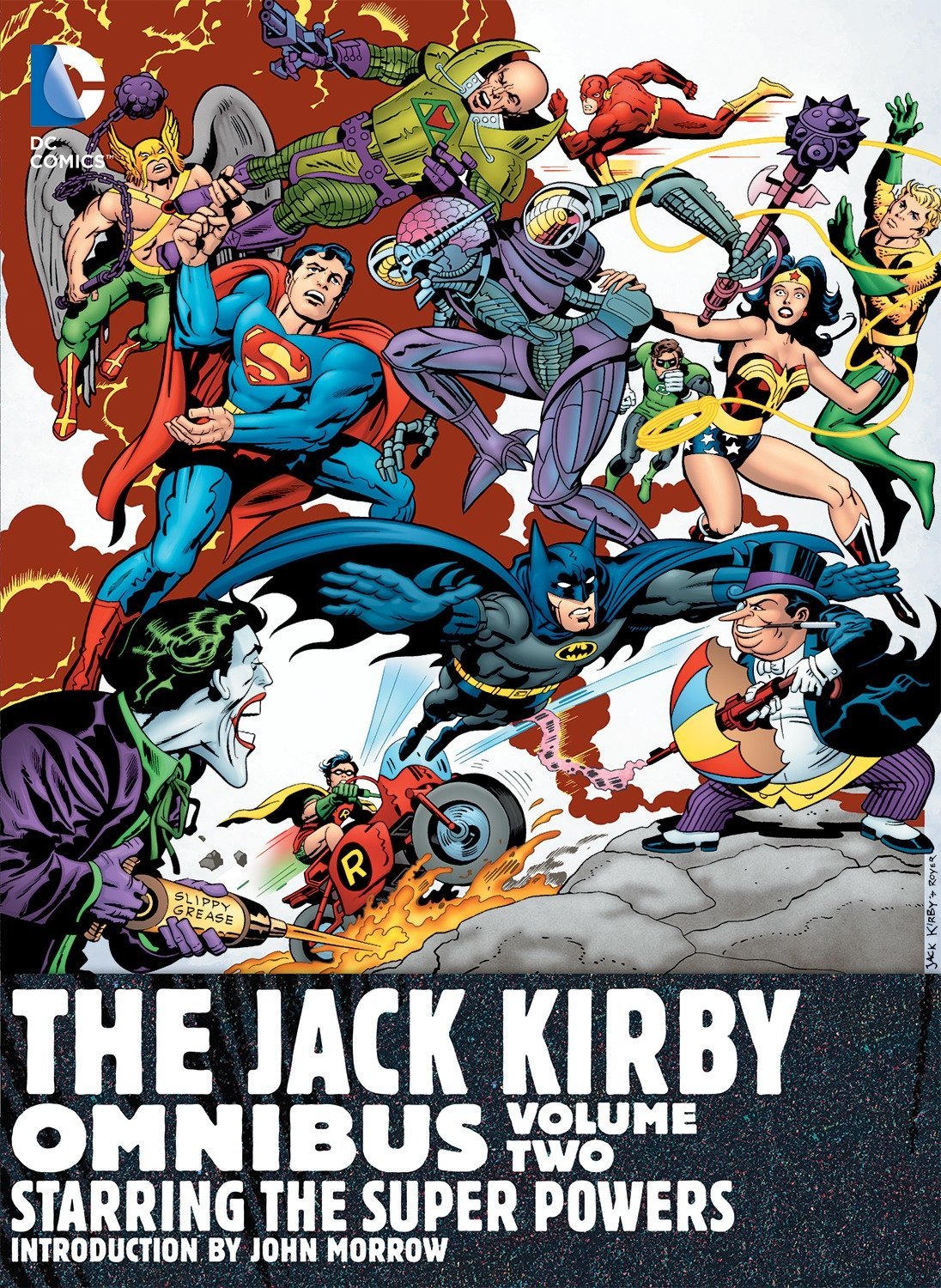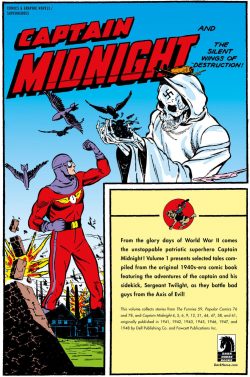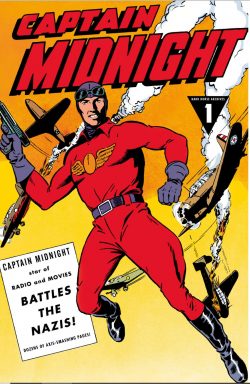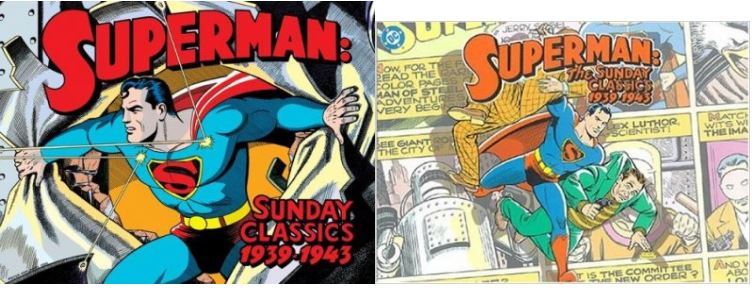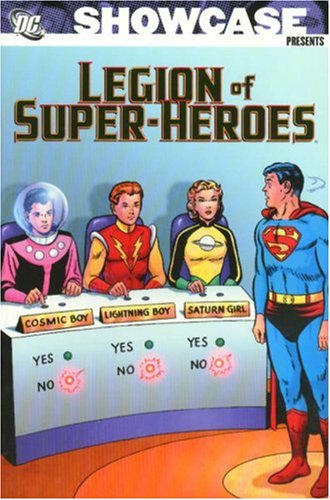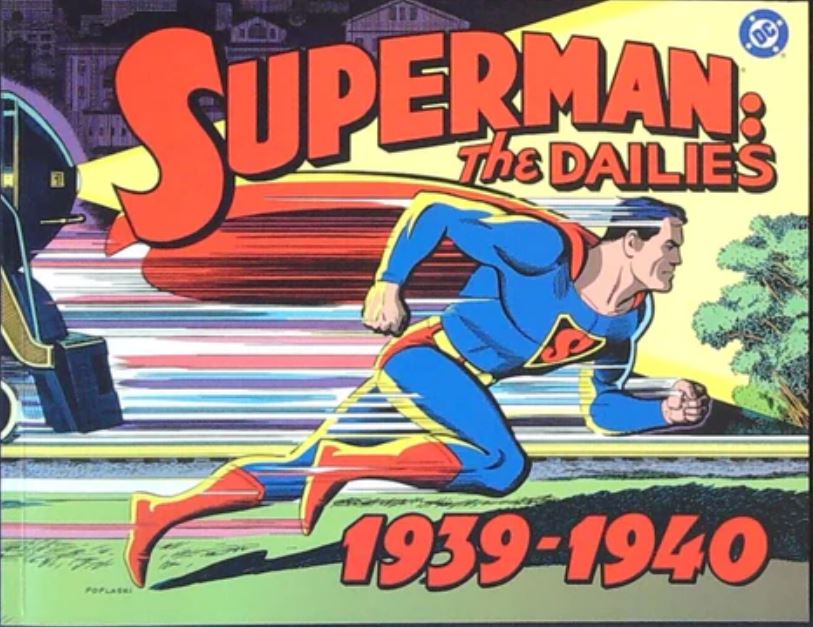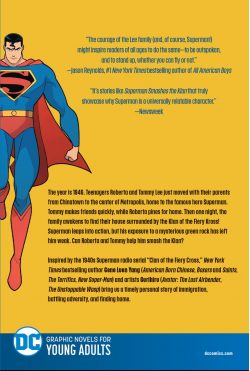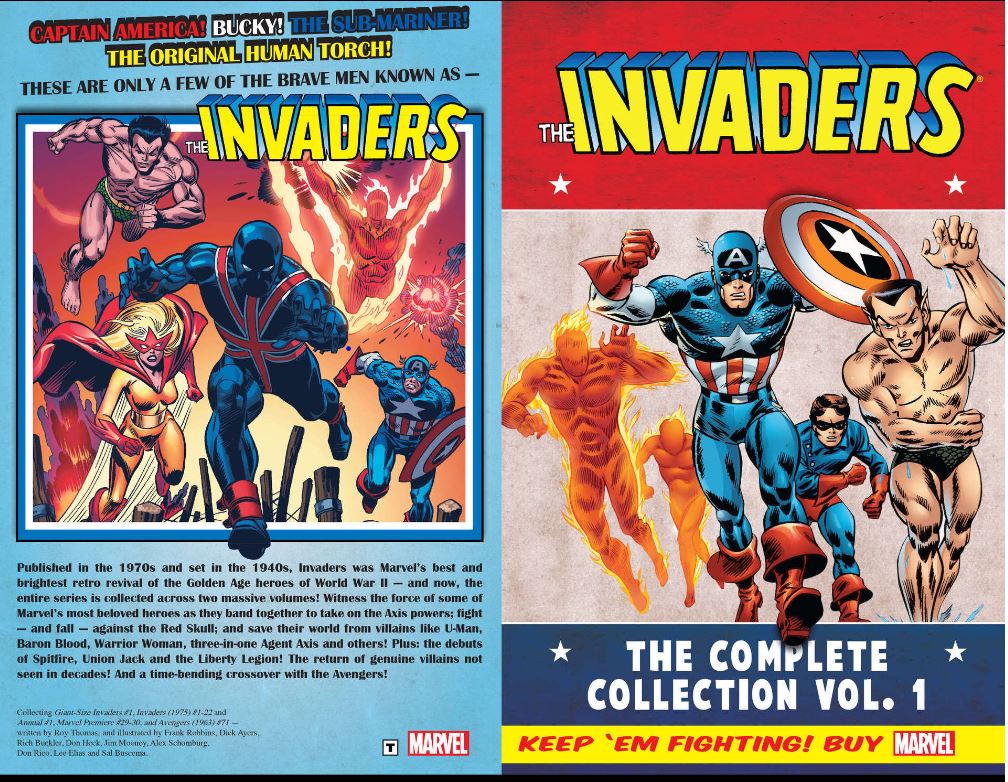
By Roy Thomas, Frank Robbins, Rich Buckler, Dick Ayers, Don Heck, Jim Mooney, Carl Burgos, Don Rico, Lee Elias, Alex Schomburg, Sal Buscema & various (Marvel)
ISBN: 978-0-7851-9057-8 (TPB/Digital edition)
The adage never grows stale: the best place to see American superheroes in action is in World War II, thrashing Nazis and their evil Axis allies. And yes, that includes their so-numerous copycats and contemporary legatees like Hydra, The National Southern Baptist Convention, Reclaim, The LGB Alliance and The Bullingdon Club too… whether contemporaneously or retroactively…
That was especially true in the 1970s when many guilt-free hours were devoted to portraying the worst people on Earth getting their just deserts (or just getting mocked in shows like Hogan’s Heroes and films like The Producers or To Be or Not to Be). In an era of generational backward-looking fostering cosy familiarity and with Lynda Carter on TV screens crushing the Third Reich every week in The New Adventures of Wonder Woman, admitted aficionado and irredeemable nostalgist Roy Thomas (Conan the Barbarian, X-Men, All-Star Squadron, Wonder Woman, Shazam!, Fantastic Four, Thor, Spider-Man, Daredevil ad infinitum) sought to revisit the “last good war”. Here he would back-write a super-team comprising Marvel’s (or rather Atlas/Timely’s) “Big Three” – Captain America, Sub-Mariner and the Human Torch – and however many minor mystery-men as he could shoehorn in…
Long before this series debuted, Prince Namor, the Sub-Mariner was the hybrid offspring of a sub-sea Atlantean princess and an American polar explorer: immensely strong, highly resistant to physical harm, able to fly and thrive above and below the waves. Created by young Bill Everett, Namor technically predates Marvel/Atlas/Timely Comics.
He first caught the public’s attention as part of the elementally electrifying “Fire vs. Water” headlining team in Marvel Comics #1 (October 1939 and Marvel Mystery Comics from the next issue) alongside The Human Torch, but had debuted earlier in the year in monochrome Motion Picture Funnies, a weekly promotional giveaway handed out to moviegoers.
Swiftly becoming one of the new company’s biggest draws, Namor gained his own title at the end of 1940 (cover-dated Spring 1941) and was one of the last super-characters to go at the end of the first heroic age. In 1954, as Atlas, the company briefly revived the Big Three and Everett returned for an extended run of superb fantasy tales. The time wasn’t right and the title sunk again.
When Stan Lee & Jack Kirby began reinventing comics in 1961 with Fantastic Four, they revived the forgotten amphibian as a troubled, semi-amnesiac, yet decidedly more regal and grandiose anti-hero, embittered at the loss of his sub-sea kingdom – seemingly destroyed by American atomic tests. He also became a dangerous bad-boy romantic interest: besotted with the FF’s Sue Storm.
Namor knocked around the budding Marvel universe, squabbling with assorted heroes like Daredevil, The Avengers and X-Men before securing his own series as half of “split-book” Tales to Astonish with fellow antisocial antihero The Incredible Hulk, eventually returning to solo stardom in 1968.
Crafted by Carl Burgos, the original Flaming Fury burst into life as a humanoid devised by troubled, greedy Professor Phineas Horton. Instantly igniting into a malfunctioning uncontrollable fireball whenever exposed to air, the artificial innocent was consigned to entombment in concrete but escaped to accidentally imperil New York City until he fell into the hands of malign mobster Sardo. His attempts to use the android as a terror weapon backfired and the hapless, modern day Frankenstein’s Monster became a misunderstood fugitive. Even his creator only saw the fiery Prometheus as a means of making money.
Gradually gaining control of his flammability, the angry, perpetually rejected android opted to make his own way in the world. Instinctively honest, he saw crime and wickedness everywhere and resolved to do something about it. Indistinguishable from human when not afire, he joined the police as Jim Hammond, tackling ordinary thugs even as his volcanic alter ego battled outlandish fiends like Asbestos Lady. Soon after, the Torch met his opposite number when the New York City Chief of Police asked him to stop the savage Sub-Mariner from destroying everything. The battles were spectacular but inconclusive, and only paused after policewoman Betty Dean brokered a tenuous ceasefire.
The Torch gained a similarly powered junior sidekick Toro, but both vanished in 1949: victims of organised crime and Soviet spies working in unison. They spectacularly returned in 1953’s revival, renewing their campaign against weird villains, Red menaces and an assortment of crooks and gangsters before fading again. In the sixties it was revealed that atomic radiation in the Torch’s body finally reached critical mass and Jim – realising he was about to flame out in a colossal nova – soared into the desert and went up like a supernova…
Jim Hammond was resurrected many times in the convoluted continuity that underpinned the modern House of Ideas and is with us still…
Created by Joe Simon & Jack Kirby in an era of national turmoil and frantic patriotic fervour, Captain America was a dynamic, emphatically visible response to the horrors of Nazism and the threat to democracy. Consequently, the concept quickly lost focus and popularity once hostilities ceased. The Sentinel of Liberty was lost during post-war reconstruction, only to briefly reappear after the Korean War: a harder, darker Cold Warrior hunting monsters, subversives and “Reds” who lurked under every American bed.
He vanished once more, until the burgeoning Marvel Age resurrected him just in time to experience the Land of the Free’s most turbulent, culturally divisive era. He became a mainstay of the Marvel Revolution in the Swinging Sixties, but arguably lost his way after that, except for a politically-fuelled, radically liberal charged period under scripter Steve Englehart.
Despite everything, Captain America evolved into a powerful symbol for generations of readers and his career can’t help but reflect that of the nation he stands for…
Devised in the fall of 1940 and on newsstands by December 20th, Captain America Comics #1 was cover-dated March 1941, and an instant monster, blockbuster smash-hit. He had boldly and bombastically launched in his own monthly title with none of the publisher’s customary caution, and instantly was the undisputed star of the Big Three. He was, however, the first to fall from popularity as the Golden Age ended.
You know the origin story like your own. Simon & Kirby depicted scrawny, enfeebled patriot and genuinely Good Man Steven Rogers – after constant rejection by the Army – is recruited by the Secret Service. Desperate to stop Nazi expansion, the passionate kid joined a clandestine experiment to create physically perfect super-soldiers.
I have no idea if the irony of American Übermenschen occurred to the two Jewish kids creating that mythology, but here we are…
When a Nazi infiltrated the project and murdered the pioneering scientist behind it all, Rogers was the only successful result and became America’s not-so-secret weapon. When he was lost, others took up the role and have periodically done so ever since. I might be wrong, but as I recall every substitute and replacement was white and male…
When Thomas was writing The Avengers, issues #69-71 featured a clash with Kang the Conqueror spanning three eras. It saw some of the team dumped in WWII Paris and manipulated into fighting in situ Allied costumed champions. When that memorable minor skirmish was expanded and extrapolated upon in 1975, history was (re)made…
Re-presenting Giant-Sized Invaders #1, The Invaders #1-22 & Annual #1, Marvel Premiere #29-30, and Avengers #71 – collectively spanning June 1975 to November 1977 – this initial foray charts the course of the team and exponentially expands Marvel lore and history, opening with an extended multi-chapter romp.
Cover-dated June 1975, and crafted by Thomas, Frank Robbins (Johnny Hazard, Batman, Superboy, The Shadow, Morbius/Adventure into Fear, Captain America, Man from Atlantis) & Vince Colletta, ‘The Coming of the Invaders!’ saw a revisionist Big Three saving British Prime Minister Winston Churchill during a US visit in December 1941…
Nazi spies and saboteurs are crushed by boy marvel Bucky and ‘A Captain Called America!’ who is then recruited by the FBI to safeguard a mystery dignitary. The duo are ordered to cooperate with another extraordinary operative in ‘Enter: the Human Torch!’.
A tale of sinister super-science unfolds, revealing how Nazi Colonel Krieghund and the enigmatic Brain Drain have bult their own super-soldier. Master Man (AKA Ubermensch) has already beaten the Fiery Fury and sidekick Toro in pursuit of the plot. Grudging associates at best, the quartet of heroes rush to Chesapeake Bay in time to see how ‘The Sub-Mariner Strikes!’ when Master Man targets Churchill’s battleship. On the clash’s conclusion, the grateful premier suggests the saviours shelve their innate animosity for the duration and work together to crush the Axis alliance.
The blockbuster origin tale is augmented here by its accompanying editorial ‘Another Agonizingly Personal Recollection by Rascally Roy Thomas’…
The launch was a huge success and The Invaders #1 (August) was rushed out. Like Giant-Size X-Men #1, an in production second issue was rapidly retooled, with the first half appearing as ‘The Ring of the Nebulas!’ and ‘From the Rhine… a Girl of Gold!’ with the new team relocated to blitz-blasted London and arriving in the middle of shattering air raid. As their flying compatriots bring down German bombers, Cap and Bucky land Namor’s Atlantean sky-sub Flagship and help clear burning buildings of casualties and rescue a strange, shellshocked woman who – although amnesiac – proves to be ‘A Valkyrie Rising!’ With “Hilda’s” help the heroes infiltrate ‘Beyond the Siegfried Line!’ and invade Brain Drain’s citadel only to be ambushed by a trio of Teutonic gods…
Following second editorial ‘Okay Axis, Here We Come!’, the saga explosively concludes in the second bimonthly issue (cover-dated October) as ‘Twilight of the Star-Gods!’ reveals the incredible truth about Hilda, Loga, Donar and Froh, the source of Brain Drain’s scientific advances and why it’s bad to abuse and exploits guest from other planets…
Action was never far away and #3 opened with the triumphant Invaders saving a convoy from U-Boats before briefly returning to America to forestall a ‘Blitzkrieg at Bermuda’. The crisis was instigated by an Atlantean traitor siding with and working for the Nazis.
Namor’s alliance with the Allies only existed because the Germans had depth-charged his undersea city to eradicate its sub-human inhabitants, but now a rogue named Merrano has artificially augmented his strength and led a cadre of Atlanteans and sea beasts against surface bases. The aquatic blockbuster was once Namor’s chief scientist and has misused Atlantean technology for his own purposes as U-Man. Regal pride stung, Namor demands to fight the traitor alone, sparking a split with his newfound comrades. In the end, he and Bucky go on without the others or any official sanction….
As the marine man-monster and his hordes head for Churchill’s secret meeting in the Caribbean, the quarrellers at last agree that ‘U-Man Must be Stopped!’ and take all necessary steps, spurred on and umpired by Namor’s human girlfriend Betty Dean.
The drama intensified with #5 (March 1976) as Thomas expanded his niche universe by creating a second squad of masked stalwarts. Pencilled by Rich Buckler and Dick Ayers, with inks from Jim Mooney. ‘Red Skull in the Sunset!’ opens a 4-issue epic which sees the Invaders captured by the ultimate fascist and turned into weapons against America. Only Bucky – disregarded as too puny to exploit – remained free. The tale continued in #6 (‘…And Let the Battle Begin!’ with art by Robbins & Colletta May) and also crossed over into Marvel Premiere #29’s ‘Lo, The Liberty Legion!’ & 30’s ‘Hey Ma,! They’re Blitzin’ the Bronx’ (April and June 1976) wherein Bucky recruited a number of new superheroes and made them into a team to defeat the Invaders and scupper the Skull’s schemes.
As delivered by Thomas, Don Heck, & Colletta the recruits – The Patriot, Whizzer, Miss Marvel, Blue Diamond, Red Raven, Jack Frost and the Thin Man – came from assorted Timely strips of the 1940s and remained state-side as Home Front heroes. A fabulously engaging primal romp, the epic is inexplicably divided, with the Marvel Premiere instalments (the second and fourth/final chapters) relegated to the back of the book along with editorial features ‘Give Me Liberty – or Give Me The Legion!’ parts 1 and 2.
With the confusion and reputations all cleared up, the liberated Invaders return to war-torn London for #7 (July 1976) to tackle ‘The Blackout Murders of Baron Blood!’, with a costumed German vampire terrorising the capital. During a nighttime assault, the Torch saves Air Raid Warden Lady Jacqueline Falsworth from the bloodsucker and is gratefully introduced to her father: a legendary “masked spy-buster of World War One”.
James Montgomery Falsworth had worked with an international group of proto-superheroes dubbed Freedom’s Five, and on hearing of the vampire, comes out of retirement to finish his duel with the Kaiser’s top secret weapon…
Meanwhile, the other Invaders have also clashed with Baron Blood and are happy that ‘Union Jack is Back!’ (inked by Frank Springer): blithely unaware that the beast is actually a member of Falsworth’s household waiting to pick them off at his leisure. It begins as Union Jack is crippled by Blood and seemingly helpless to save his daughter from being drained in #9’s ‘An Invader No More!’
With justice finally served, the need for a deadline-saving reprint sees #10 mix new framing sequence ‘The Wrath of the Reaper!’ with a remembrance amongst the heroes as they rush father and daughter to hospital: ‘Captain America Battles the Reaper!’ by Al Avison & Al Gabriele as first seen in Captain America #22 (January 1943) rowdily recounted the failure of one of Adolf Hitler’s top agents…
The new history resumed in #11 as Montgomery learns he will never walk again, and Jacqueline is saved by an emergency transfusion of the Torch’s artificial, instantly regenerating blood. However, the combination of vampiric body fluids and the Torch’s liquid fuel source transform her into something new and powerful…
In another wing of the hospital, refugee Dr Gold has been building an advanced warsuit which he inexplicably turns on the Invaders until Jacqui lends a fast and fiery hand on the ‘Night of the Blue Bullet!’
As she seeks to replace her father on the team as Spitfire, Captain America ferrets out the reason for Gold’s betrayal and orders a rescue mission ‘To the Warsaw Ghetto!’ to save the boffin’s hostage brother Jacob. The foray is a complete disaster and the squad is captured by macabre Gauleiter Eisen, but his triumph is short-lived as it provokes Jacob to summon ancient forces in #13’s ‘The Golem Walks Again!’
A new team debuted in the next issue with ‘Calling… The Crusaders!’ as a (mostly) British ensemble – comprising Spirit of ‘76, Ghost Girl, Captain Wings, Thunderfist, Tommy Lightning and Dyna-Mite – start outshining The Invaders and boosting morale. Tragically all is not as it seems and a deadly propaganda coup is barely thwarted in concluding episode ‘God Save the King!’
Penciller Jim Mooney joined Thomas and inker Springer for #16 and the start of an extended epic in ‘The Short, Happy Life of Major Victory!’ It begins when US soldier Biljo White (that’s an in-joke I’m not explaining here) is snatched off London’s streets despite the best efforts of Captain America and Bucky. It transpires that the young PFC is the creator of a comic book hero whose origin so-closely mirrors the actual process that turned Steve Rogers into a living weapon that the Nazis have deduced he must have inside knowledge…
Fuelled by guilt and outrage, Cap leads the team straight to Hitler’s Berchtesgaden fortress, only to have entire team ambushed and defeated by a re-invigorated Master Man.
Biljo has been tortured by sadistic officer Frau Rätsel, but only revealed under deep hypnosis how he heard the story of a super soldier in a bar: recalling a key clue allowing her to perfect Brain Drain’s Master Man process.
At that moment a male superior reprimands her for exceeding her authority (Aryan dogma being that women were only meant for breeding and entertainment purposes) and her violent rebuttal causes an explosion that wrecks the lab and totally changes her. ‘The Making of Warrior Woman, 1942!’ consequently frees the Allied captives, but their short-lived liberty ends when Master Man and the newly-minted Krieger-Frau (Warrior Woman) double-team them. With Captain America hurled to his death and the others despatched to Berlin to provide an obscene spectacle, events take a sudden shocking turn in #18 as ‘Enter: The Mighty Destroyer!’ reintroduces another Golden Age Great by way of a complex web of family ties and debts of honour finally repaid…
When Cap was thrown off the mountain, he was saved by a mystery-man who had been fighting behind enemy lines since 1941, terrorising the Wehrmacht through a one-man war of attrition. He reveals that he was imprisoned in Hamburg where fellow inmate Professor Erich Schmitt made him swallow his own version of the super-soldier serum to keep it from the Nazis. The potion made him a veritable superman and he’s been making them pay ever since. He also reveals to Cap his real name…
As they prepare an assault to free The Invaders, in England Spitfire has met with former Crusader Dyna-Mite and discovered some painful family secrets. Ignoring orders to say out of harms way, she commandeers a plane and heads for Germany with the Tiny Titan. Insubordination is a proudly inherited trait however, and the heroes cannot prevent wheelchair-bound Lord Falsworth and his “chauffeur” Oskar joining the expeditionary force…
Bach in Berchtesgaden, the ruthless infiltration is successful but too late. Namor, Bucky, Torch and Toro have already been shipped to Berlin for public execution, before #19’s ‘War Comes to Wilhelmstrasse’ sees Captain America’s futile attempt to save them foiled and his capture, augmented by the untold tales of Falsworth’s son Brian and companion Roger Aubrey. Conscientious objectors, they had shamefully gone to Berlin before vanishing years prior to war being declared, only for one of them to suddenly return as Dyna-Mite.
Another deadline debacle allowed a brace of classic reprints to resurface in #20 and 21 with climactic conclusion ‘The Battle of Berlin!’ cleft in two. The first half sees the Allied heroes saved from death by a revitalised Union Jack and the resultant battle for freedom allow Krieger-Frau to dodge the forced marriage to Master Man that Hitler had ordered…
That issue also held a colorized reshowing of ‘The Sub-Mariner’ by Everett from Motion Picture Funnies, after which ‘The Battle of Berlin! Part Two!’ follows the traumatic flight bac to Britain and the critical injury suffered by one of the heroes…
Another Everett ‘The Sub-Mariner’ mini-masterpiece – from Marvel Mystery Comics #10 (August 1940) – then sees the sea prince targeted by murderous surface men…
Their plane ditched in the English channel, The Invaders are saved by the Navy and treatment begins for bullet-riddled Toro. Again reduced to anxious waiting, the team learn how he began his career in #22’s ‘The Fire That Died!’ (by Thomas, Mooney & Springer and adapted from The Human Torch #2: September 1940).
Ending the official chronology is Invaders Annual #1 (November 1977),which tells the other side of the originating story from Avengers #71, from the viewpoint of the 1940s heroes. Moreover, each individual chapter is crafted by a veteran who worked on the characters during the Golden Age. The mission begins with ‘Okay, Axis… Here We Come!’ by Thomas, Robbins & Springer, with the heroes separately pursuing insidious supervillains. ‘The Human Torch’ battles The Hyena as limned by Alex Schomburg; Don Rico’s ‘Captain America’ clashes with Agent Axis and ‘Sub-Mariner’ sinks The Shark thanks to Lee Elias & Springer, before the Invaders are teleported to Paris by a mysterious power.
That’s Kang and his opponent the Grandmaster meddling with time to facilitate a duel with three Avengers from 1969, and concludes here with ‘Endgame: Part II’. A semblance of sense is afforded by Thomas’ essay ‘Okay, Axis… Here We Come – Again!’
Woefully misfiled, the contents of Marvel Premiere #29 & 30 are next, before we end with the opening shot from the Avengers #71, by Thomas, Sal Buscema & Sam Grainger. ‘Endgame!’ was the final chapter in a triptych that saw the World’s Mightiest Heroes hijacked to the future to by old enemy Kang: living pieces in a cosmic chess-game with an omnipotent alien. If the Avengers fail – Earth would be eradicated from reality. the tale was significant for introducing 2/3 superteams: Squadron Supreme, Squadron Sinister and The Invaders. The saga culminated with The Vision, Black Panther and Yellowjacket sent to 1941 to fight the WWII incarnations of Namor, Human Torch and Captain America…
With covers by Robbins, John Romita Sr., Jack Kirby, Gil Kane, Ed Hannigan, Alex Schomburg, Joe Sinnott & Frank Giacoia, this is a no-nonsense, albeit convoluted thrill-ride for continuity-addicts and fervent Fights ‘n’ Tights fans that is full of fun from first to finish.
© 1969, 1975, 1976, 1977, 2014 Marvel Characters, Inc. All Rights Reserved.
